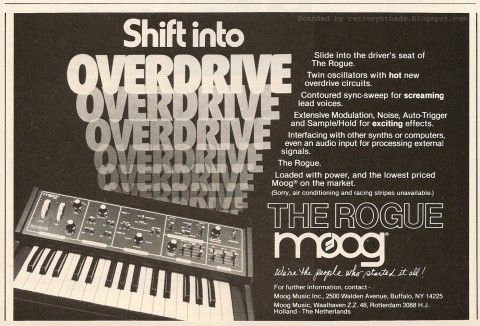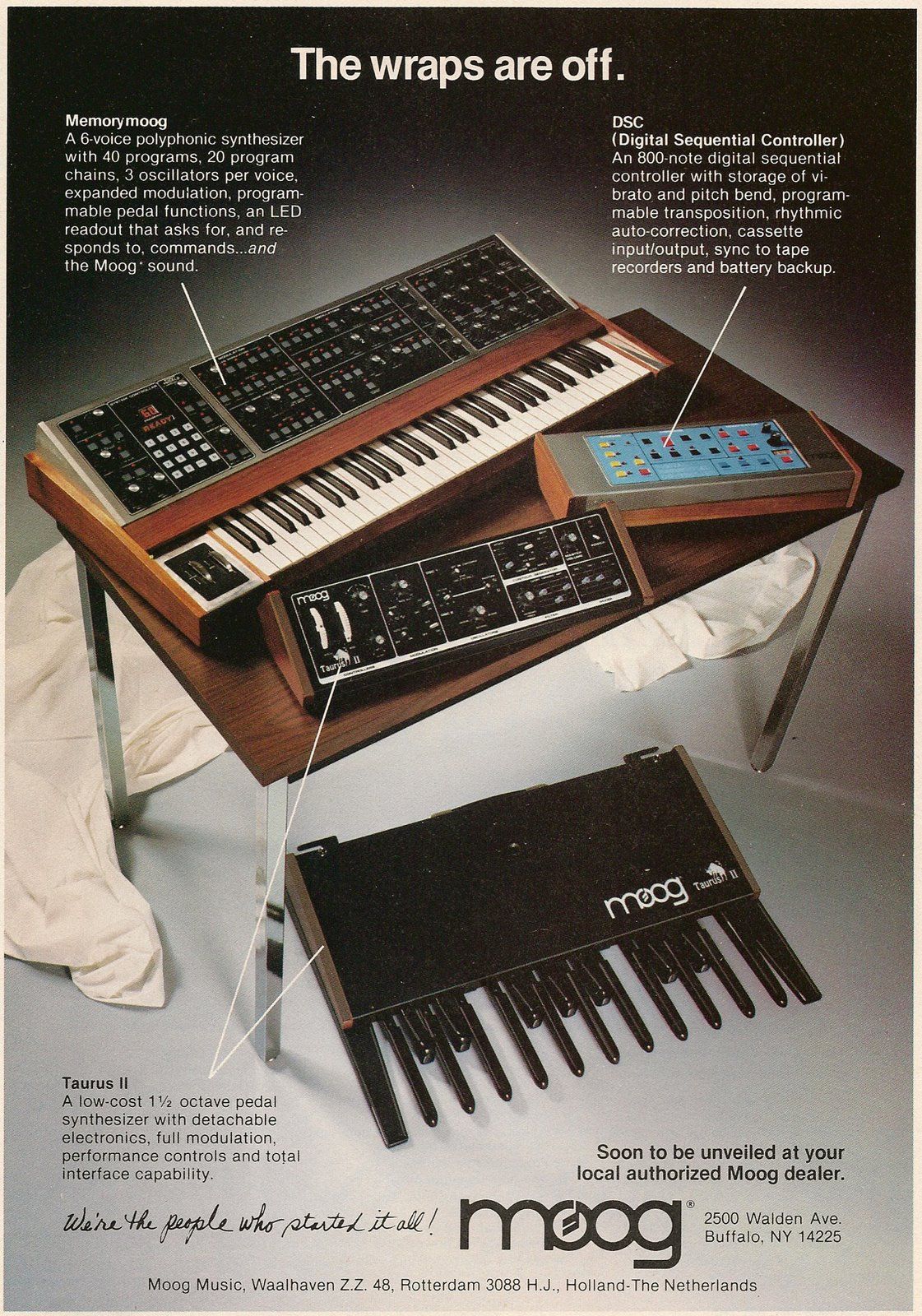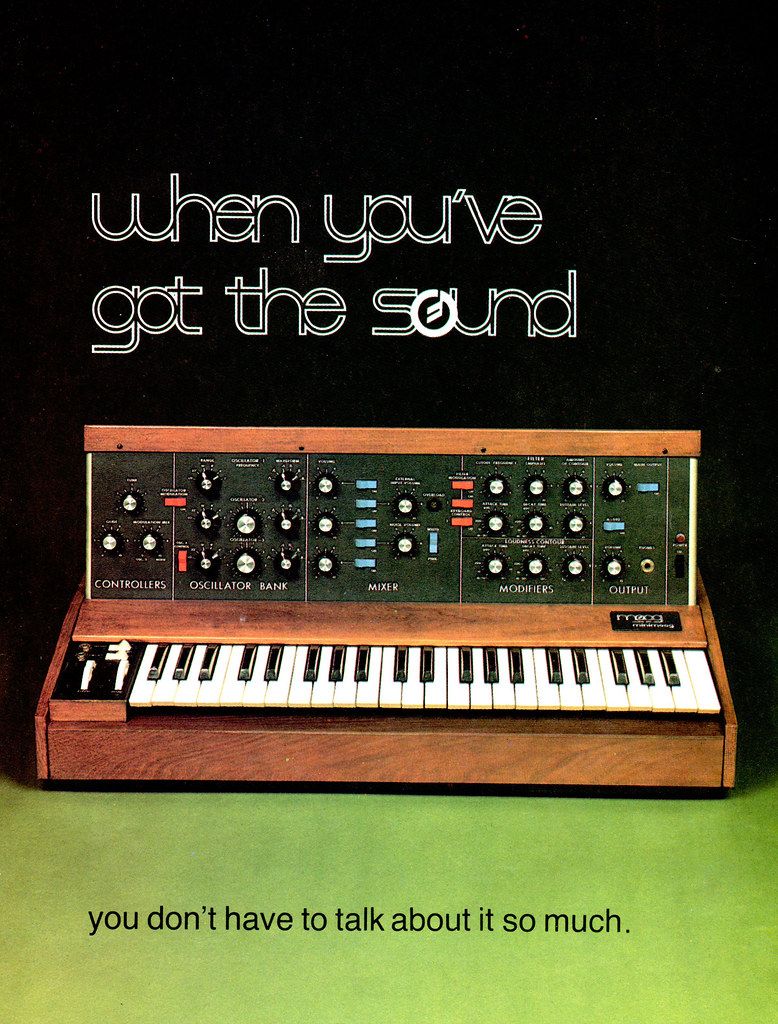Moog disregards this cardinal rule of advertising and focuses on the features instead. Here’s why it works.
Every rule is meant to be broken, and Moog’s ads for their popular line of keyboards is a perfect example of when to break the oldest rule in the book.
There’s an old saying in advertising:
“Don’t market the features, market the benefits.”
If this is universally true, then the ads below from Moog fail.

We're the people who started it all
Twin oscillators, contoured sync-sweep, extensive modulation, interfacing...
Wha—!?
Get out of here with that jargon.

The big unveil
6-voice polyphonic, 800-note digital sequential controller, low-cost one and a half octave pedal.
Seriously, do you know what they're talking about?

Less it more?
Just a picture of knobs and keys to me.
Moog knows their audience.
What means nothing to you and me means everything to a Moog user.
These people are tech-heads. They love the nitty-gritty engineering of these well-crafted machine.
They've studied up and done their homework. Moog isn't marketing to your average Joe. They're advertising to technical musicians.
Moog users care about the process and technology that goes into their sound as much as they care about the final product.
In this case, the features are the benefit.
That's why this approach works so well for Moog. This year alone, they're projecting $3 billion (with a b) in sales, up 4% from last year.
It's ads like these that have made them a leader in well-crafted (yet affordable) synth machines.
They let the product speak for itself.
P.S. Don't walk away empty-handed
Above the Fold is a newsletter about the power of marketing. Every week I send stories just like these straight to your inbox.




